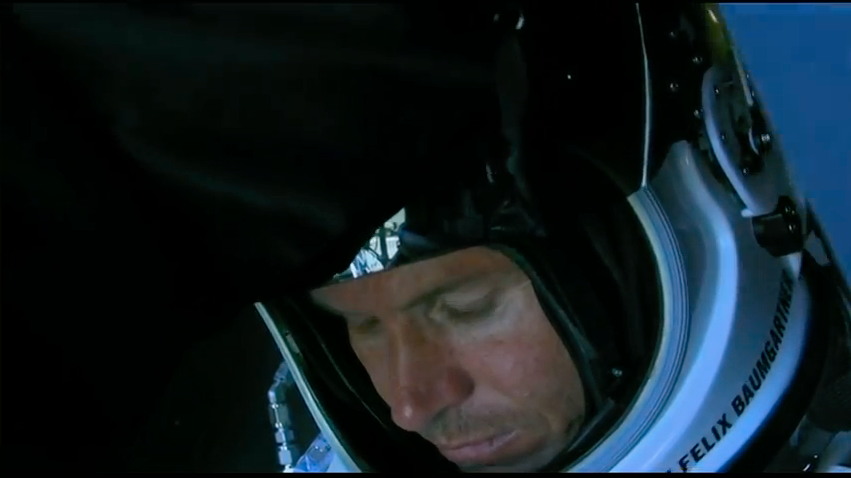
An Austrian daredevil's attempt to make the world's highest skydive, a jump that would send him falling faster than the speed of sound, was aborted today (Oct. 9) because of strong winds over his New Mexico staging ground.
Felix Baumgartner was planning to leap from a balloon nearly 23 miles (37 kilometers) above Roswell, N.M., today (Oct. 9). But mission officials cancelled the liftoff at 1:42 p.m. EDT (1742 GMT) after winds began gusting at the launch site. It was the second time in two days that the record-breaking skydive was postponed by wind concerns.
Weather is a major concern for the supersonic skydive attempt. The 55-story balloon that will carry Baumgartner aloft is extremely thin and fragile, and Baumgartner's team won't greenlight a launch if winds at or near the liftoff site exceed 2 mph (3.2 kph).
Today's scrub may be particularly frustrating for the daredevil and his mission — which is known as Red Bull Stratos — because winds were calm in the morning, but a radio problem in Baumgartner's custom-built capsule prevented liftoff. And the weather over the next few days looks iffy. [Video: Extreme Skydive from 120,000 Feet Animated]
"The weather tomorrow is not for certain," Red Bull Stratos' launch commentator said. "Somewhat questionable tomorrow, and then it begins to deteriorate for a couple of days. That's why they were trying so hard to get this off today."
The balloon that was to be used today is now spent and cannot be used again, the commentator added. But Red Bull Stratos does have a backup balloon ready for the next attempt.
When he does finally launch, if all goes according to plan, Baumgartner will plummet to Earth from an altitude of 120,000 feet (36,576 meters), becoming the first skydiver to break the sound barrier during his 5.5-minute freefall.
Get the Space.com Newsletter
Breaking space news, the latest updates on rocket launches, skywatching events and more!
He should also notch a few other records in the process, including longest-duration freefall and highest manned balloon flight, mission officials say.
The daredevil is aiming to break a skydiving mark that has stood since U.S. Air Force Capt. Joe Kittinger leapt from 102,800 feet (31,333 m) back in 1960. Kittinger serves as an adviser to Baumgartner's mission.
Baumgartner has been working up to Tuesday's leap in a stepwise fashion. He jumped from 71,581 feet (21,818 m) this past March and then dove from 97,146 feet (29,610 m) on July 25.
Red Bull Stratos officials have referred to Baumgartner's attempt as a jump from the edge of space, but this is perhaps a bit of an exaggeration. Space is generally considered to begin at an altitude of 62 miles (100 kilometers), or about 327,000 feet (though the U.S. Air Force awards astronaut wings to pilots who fly above 50 miles, or 80.5 km).
Follow SPACE.com senior writer Mike Wall on Twitter @michaeldwall or SPACE.com @Spacedotcom. We're also on Facebook and Google+.
Join our Space Forums to keep talking space on the latest missions, night sky and more! And if you have a news tip, correction or comment, let us know at: community@space.com.

Michael Wall is a Senior Space Writer with Space.com and joined the team in 2010. He primarily covers exoplanets, spaceflight and military space, but has been known to dabble in the space art beat. His book about the search for alien life, "Out There," was published on Nov. 13, 2018. Before becoming a science writer, Michael worked as a herpetologist and wildlife biologist. He has a Ph.D. in evolutionary biology from the University of Sydney, Australia, a bachelor's degree from the University of Arizona, and a graduate certificate in science writing from the University of California, Santa Cruz. To find out what his latest project is, you can follow Michael on Twitter.









